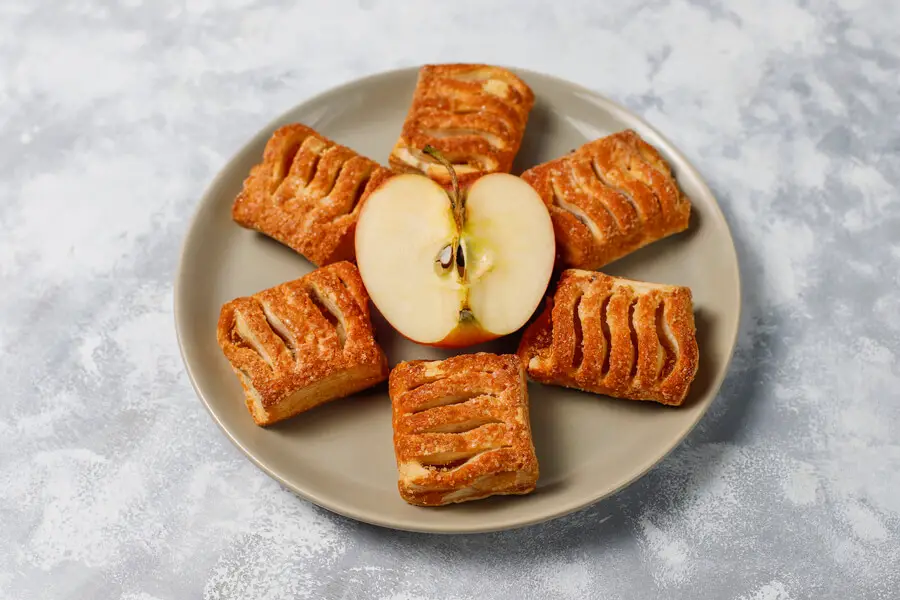Early Ventures into Innovation
McDonald’s and the Evolution of the Menu
McDonald’s has come a long way since its inception in 1940 when it started as a humble barbecue restaurant. The menu consisted of nine items, including barbecued beef, pork, ribs, and hamburger. However, with shifting trends in fast food and an increasing demand for quicker service, McDonald’s soon found itself in need of innovation.
Shifting Trends in Fast Food
The late 20th century saw a shift in consumers’ eating habits. People began to opt for healthier, lighter meals over traditional fast food offerings. It was during this period that McDonald’s first started experimenting with its menu, introducing items like salads and grilled chicken in an attempt to cater to health-conscious consumers.
The Necessity for Innovation
Innovation became a necessity for McDonald’s as competition in the fast-food industry intensified. With rivals introducing new items and expanding their menus, McDonald’s needed to innovate to keep its customers interested and attract new ones.

First Innovations: Lessons from McPizza
One of McDonald’s earliest attempts at innovation was the introduction of the McPizza in the 1980s. This move was part of McDonald’s strategy to diversify its menu and compete with pizza chains.
Introduction and Reception
Initially, the McPizza was well-received, with customers appreciating the option to have pizza at their favorite fast-food restaurant. However, the McPizza soon ran into challenges that ultimately led to its discontinuation.
Challenges and Discontinuation
The main challenge was the cooking time. Unlike burgers and fries, which could be prepared quickly, pizzas took a longer time to cook. This went against McDonald’s promise of fast service. Additionally, the McPizza required unique equipment and ingredients, adding complexity to McDonald’s operations. These challenges led to the discontinuation of the McPizza, but it served as a valuable lesson in menu innovation for McDonald’s.
The Emergence of McWrap
In 2013, McDonald’s introduced the McWrap, a chicken wrap available in three varieties. The launch of the McWrap marked a significant shift in McDonald’s approach to menu innovation.
Launching the McWrap Concept
The concept of the McWrap was born out of the need to cater to health-conscious consumers who were looking for lighter, fresher fast food options.
Culinary Inspiration and Market Research
Inspired by popular wraps from around the world, McDonald’s developed the McWrap with ingredients like grilled or crispy chicken, fresh vegetables, and flavorful sauces. Market research played a key role in fine-tuning the McWrap’s recipe, ensuring it would appeal to a broad range of consumers.
McWrap’s Position in the Healthy Eating Movement
The McWrap was positioned as a healthier alternative to traditional fast food choices. Its introduction signaled McDonald’s commitment to offering a wider range of options to cater to different dietary preferences and lifestyles.
Varieties and Customization
The McWrap was launched with three varieties: Sweet Chili Chicken, Chicken & Bacon, and Chicken & Ranch. Over time, McDonald’s expanded the McWrap menu, adding new flavors and customization options.
McWrap Menu Expansion
Following the success of the initial launch, McDonald’s introduced new McWrap varieties, including a breakfast version. This menu expansion allowed McDonald’s to cater to a broader range of tastes and meal occasions.
Customization Options and Consumer Choices
McDonald’s also offered customization options for the McWrap, allowing customers to choose their preferred type of chicken (grilled or crispy) and add or remove ingredients. This level of customization was a novel concept for McDonald’s and resonated well with consumers, who appreciated the ability to tailor their meals to their tastes and dietary preferences.
Salad Shakers and the Healthy Push
In the early 2000s, McDonald’s introduced Salad Shakers, a line of portable salads served in a cup. This marked another significant step in McDonald’s push towards healthier offerings.
Introducing Salad Shakers
The idea behind Salad Shakers was to make salads more convenient and fun to eat. The salads were served in a cup, allowing customers to add dressing and then shake the cup to distribute the dressing evenly.
A Shift Towards Health-Conscious Offerings
Salad Shakers were part of McDonald’s efforts to cater to health-conscious consumers. By offering salads in a fast-food setting, McDonald’s hoped to attract customers who were looking for healthier meal options.
Consumer Response to Salad Shakers
While Salad Shakers were initially well-received, they were eventually discontinued due to declining sales. However, they paved the way for McDonald’s current range of salad offerings, which includes side salads and premium salads with a variety of ingredients and dressings.
Evolving Salad Options
Following the discontinuation of Salad Shakers, McDonald’s continued to evolve its salad offerings. Today, salads are a staple on the McDonald’s menu, available in a variety of combinations to cater to different tastes and dietary preferences.
Expanding Salad Offerings
McDonald’s current salad offerings include options like the Southwest Grilled Chicken Salad and the Bacon Ranch Salad. These salads feature a variety of ingredients, including fresh vegetables, grilled or crispy chicken, cheese, and a choice of dressings.
The Intersection of Taste and Health
Through its salad offerings, McDonald’s has been able to strike a balance between taste and health. By offering a variety of salads with flavorful ingredients and dressings, McDonald’s is able to cater to health-conscious consumers without compromising on taste.
Technological Integration in the Ordering Process
Technology has played a significant role in McDonald’s approach to food innovation. From digital ordering to personalization, McDonald’s has leveraged technology to enhance the customer experience.
Digital Ordering and Personalization
With the rise of smartphones and online ordering, McDonald’s introduced its own mobile app. This allowed customers to order ahead, pay digitally, and even customize their orders.
McDonald’s App and Online Ordering
The McDonald’s app offers a host of features, including mobile ordering, digital payments, and access to exclusive deals. By embracing online ordering, McDonald’s has made it easier for customers to order their favorite meals and discover new ones.
Customizing Orders for Health and Taste Preferences
The McDonald’s app also allows customers to customize their orders. Whether it’s adding extra pickles to a burger or swapping fries for a side salad, customers can tailor their meals to their tastes and dietary preferences. This level of personalization has been well-received by customers, offering them greater control over their McDonald’s experience.
Impact on Customer Experience
Digital ordering and personalization have had a significant impact on the customer experience at McDonald’s. They have not only streamlined the ordering process but also provided McDonald’s with valuable customer insights.
Streamlining the Ordering Process
By allowing customers to order and pay digitally, McDonald’s has been able to reduce wait times and improve order accuracy. This has resulted in a more efficient and enjoyable dining experience.

Feedback Mechanisms and Continuous Improvement
The McDonald’s app also includes a feedback mechanism, allowing customers to rate their experience and provide comments. This feedback is invaluable in helping McDonald’s continuously improve its products and services.
Challenges in Innovation
Innovation is not without its challenges. For McDonald’s, these include balancing tradition with modernization and addressing health concerns.
Balancing Tradition and Modernization
While innovation is crucial for staying relevant, McDonald’s also needs to maintain its core offerings that customers know and love.
Maintaining Core Offerings Amidst Innovations
Despite introducing new items like the McWrap and salads, McDonald’s has continued to offer its classic menu items, including the Big Mac, Chicken McNuggets, and fries. These items are synonymous with the McDonald’s brand and continue to be popular among customers.
Consumer Expectations and Brand Consistency
While customers appreciate variety and newness, they also expect consistency from McDonald’s. This means that any new product must meet the high standards set by existing offerings. Striking a balance between innovation and consistency is a constant challenge for McDonald’s.
Addressing Health Concerns
As a fast-food chain, McDonald’s has often been criticized for its high-calorie, high-fat menu items. Addressing these health concerns while maintaining taste and affordability is another challenge in food innovation.
Navigating Nutritional Debates
In response to health concerns, McDonald’s has made efforts to improve the nutritional profile of its menu. This includes reducing sodium and trans fats, offering healthier side options like apple slices, and providing nutritional information on packaging and online.
Transparency in Ingredients and Sourcing
McDonald’s has also committed to transparency in its ingredients and sourcing practices. The company provides detailed ingredient information for all its menu items and is working towards sourcing all food and packaging from sustainable sources.
Global Adaptations and Localized Innovations
As a global brand, McDonald’s has had to adapt its menu to cater to different tastes and dietary preferences around the world. This has resulted in some unique localized innovations.
Regional Variations in Innovation
From the Teriyaki Burger in Japan to the McAloo Tikki in India, McDonald’s has introduced a variety of regional variations on its menu. These localized innovations reflect McDonald’s commitment to catering to local tastes.
Tailoring Menus to Local Tastes
Adapting the menu to local tastes involves more than simply adding a few local ingredients. It requires a deep understanding of local food culture and preferences, as well as a commitment to sourcing locally where possible.
Successes and Challenges in Global Implementation
While many localized innovations have been successful, others have not resonated with consumers. These failures provide valuable lessons for McDonald’s in its ongoing efforts to innovate and adapt to different markets.
Lessons from Failed Innovations
Not all of McDonald’s innovations have been successful. Some have been discontinued due to low demand, while others have not resonated with consumers. These failed innovations provide valuable lessons for McDonald’s in its ongoing efforts to innovate.
Learning from Mistakes
Failed innovations like the McPizza and the Arch Deluxe (a premium burger that failed to attract customers) serve as reminders of the challenges of menu innovation. They underscore the importance of understanding customer preferences and market trends, as well as the need for effective marketing.
The Role of Market Research in Innovation
These experiences have reinforced the importance of market research in menu innovation. By understanding what customers want and how they perceive different menu items, McDonald’s can develop products that are more likely to succeed.
Sustainability and Future Innovations
Looking ahead, sustainability is a key focus area for McDonald’s. The company has committed to reducing its environmental footprint and sourcing ingredients responsibly.
Reducing Environmental Footprint
McDonald’s has set ambitious targets to reduce its greenhouse gas emissions and waste. This includes initiatives like energy-efficient restaurants, recycling programs, and sustainable packaging.
Energy-Efficient Restaurants
McDonald’s is investing in energy-efficient technologies for its restaurants, including LED lighting, high-efficiency kitchen equipment, and renewable energy sources.
Recycling Programs and Sustainable Packaging
McDonald’s is also working towards zero waste in its restaurants by implementing recycling programs and transitioning to sustainable packaging. The company aims to recycle guest packaging in all its restaurants and ensure that all its packaging comes from renewable, recycled, or certified sources by 2025.
Responsible Sourcing
In addition to reducing its environmental footprint, McDonald’s is committed to responsible sourcing. This includes sourcing food and packaging from sustainable sources and ensuring animal welfare standards in its supply chain.
Sustainable Food Sourcing
McDonald’s is working towards sourcing all its food from sustainable sources. This includes commitments to sustainable fish, coffee, palm oil, and packaging.
Animal Welfare Standards
McDonald’s also has strict animal welfare standards for its suppliers. The company requires suppliers to adhere to guidelines on housing, feeding, and care, and it conducts regular audits to ensure compliance.
Looking Ahead: The Future of Food Innovation at McDonald’s
The future of food innovation at McDonald’s will likely involve a continued focus on health, technology, and sustainability.

Health-Focused Innovations
With increasing awareness of the importance of healthy eating, McDonald’s will likely continue to innovate its menu to offer healthier options. This could include more salads, wraps, and other light meals, as well as low-fat and low-sugar options.
Technology-Enabled Customization
Technology will continue to play a key role in McDonald’s innovation strategy. This could include further enhancements to the mobile app, such as AI-powered recommendations and personalized nutrition information.
Sustainability-Driven Initiatives
As part of its commitment to sustainability, McDonald’s will likely continue to innovate in areas like packaging and sourcing. This could include initiatives like plant-based packaging, renewable energy sources, and partnerships with sustainable suppliers.
In conclusion, while McDonald’s has faced challenges in its journey of food innovation, it has also achieved significant successes. Through continual learning and adaptation, McDonald’s is well-positioned to stay ahead of industry trends and continue to deliver exciting, delicious, and sustainable food options to its customers around the world.





